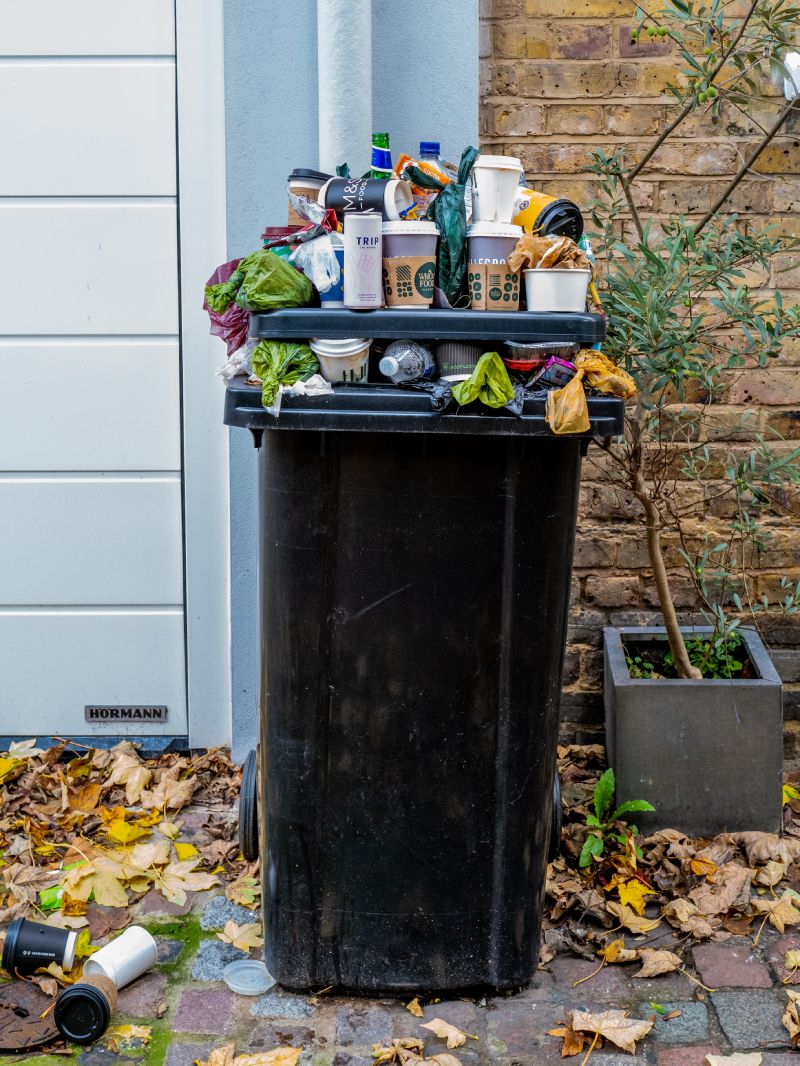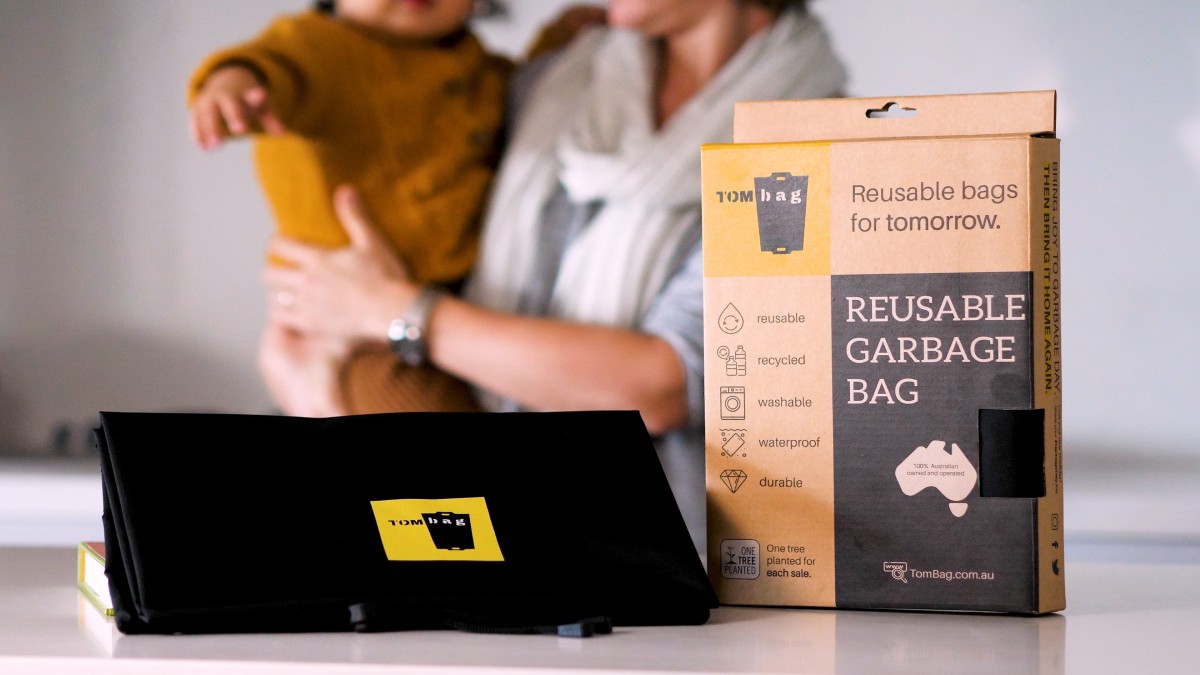Introduction
Our world is experiencing a pivotal moment, one where the call for sustainability is louder than ever. Among the many emerging environmental movements, the zero-waste movement has gained considerable momentum. This global initiative seeks to eliminate waste, a lofty but necessary goal in the face of increasing pollution and dwindling resources.
Background of Zero-Waste Movement
The zero-waste movement is a lifestyle choice that advocates for the reduction, and eventual elimination, of waste. Not confined to just recycling, it involves a complete shift in perspective about our consumption habits and product choices. In essence, it’s a call to break free from the linear ‘take-make-waste’ model and adopt a circular economy where waste is minimized, and resources are kept in use for as long as possible.
While the concept of zero waste dates back to antiquity, the modern zero-waste movement took shape in the late 20th century. In response to growing environmental concerns, individuals, communities, businesses, and even entire cities started implementing practices aimed at reducing waste. Today, it’s a global movement that continues to grow in scope and influence.
Why It’s Important
The importance of the zero-waste movement cannot be overstated. Waste generation, particularly plastic waste, has reached staggering levels. Our landfills are overflowing, our oceans are choking on plastic, and our air is polluted from the burning of waste. All this waste not only harms our planet, but it also contributes to climate change.
Adopting a zero-waste lifestyle helps to address these issues. It reduces pollution, saves resources, minimizes climate impact, and promotes social equity. Additionally, it can lead to significant cost savings for individuals and businesses alike.
Aims of the Article
This article aims to delve deep into the zero-waste movement. We’ll explore its history, its core principles, the strategies it employs, and the challenges it faces. We’ll also look at inspiring success stories from individuals, businesses, and communities who’ve managed to drastically reduce their waste and in the process, have made a significant positive impact on our environment.
In addition, we’ll provide practical tips and resources for those who wish to start their journey towards a zero-waste lifestyle. Whether you’re new to the concept or are already on the path, this article offers insights and inspiration to help you make more sustainable choices.
In the words of famous environmentalist Jane Goodall, “What you do makes a difference, and you have to decide what kind of difference you want to make.” As we dive into the world of zero waste, let that sentiment guide us. Every choice we make, every product we buy, and every waste we eliminate brings us one step closer to a sustainable and resilient world.
Defining the Zero-Waste Movement
To gain an in-depth understanding of the zero-waste movement, it’s essential to delve into its foundational concepts. This section will explore the definition of zero waste, the principles guiding the movement, and the waste hierarchy that forms the crux of zero waste practices.

Meaning of Zero Waste
Zero waste is a holistic approach aimed at the elimination of waste, not just its management. The fundamental idea is to design and manage products and processes to systematically avoid and eliminate the volume and toxicity of waste and materials. Furthermore, it seeks to conserve and recover all resources, instead of incinerating or landfilling them.
While the term “zero” implies absolute elimination, in practice, it is more about the journey towards minimizing waste as much as possible. It’s about making conscious choices every day that take us closer to the goal of a waste-free world.
Key Principles of the Movement
The zero-waste movement is guided by a set of core principles. These principles shape the philosophy of the movement and inform its practices.
-
Preservation and Recovery: All resources should be used in a way that preserves value and allows for their recovery.
-
Sustainability: Products and activities should be sustainable from extraction to disposal, thus minimizing ecological impact.
-
Circular Economy: Emphasis on designing waste out of systems and creating closed-loop systems that eliminate the idea of waste altogether.
-
Polluter Responsibility: Producers should take responsibility for the entire life-cycle of their products, including the post-consumer stage.
-
Community Involvement: Local communities should be actively involved in decision-making processes related to waste and resource management.
The Waste Hierarchy (Refuse, Reduce, Reuse, Recycle, Rot)
The zero-waste movement follows a hierarchical approach to waste management, often summarized as “Refuse, Reduce, Reuse, Recycle, Rot”. This waste hierarchy forms the basis of zero waste strategies.
-
Refuse: The first step is to refuse what we do not need. This includes single-use items, plastic products, and goods with excessive packaging.
-
Reduce: The second step is to reduce what we do need. This involves mindful consumption and prioritizing quality over quantity.
-
Reuse: Reusing items as much as possible before replacing them is the third step. This includes repairing, donating, or selling items rather than discarding them.
-
Recycle: What can’t be refused, reduced, or reused should be recycled. This includes responsible disposal of items to ensure they enter a new production cycle.
-
Rot: Lastly, organic waste should be composted (or allowed to rot) to return nutrients back into the soil.
This framework, when adopted systematically, can guide individuals, communities, and businesses towards significantly reducing their waste and moving closer to a sustainable lifestyle.
Environmental Impact of Waste
To appreciate the need for the zero-waste movement, one must understand the gravity of waste’s impact on our environment. In this section, we will explore the global waste statistics, how waste negatively affects the environment, and its contribution to climate change.

Current Waste Statistics Globally
Globally, our societies generate an alarming amount of waste. According to the World Bank, worldwide waste generation is expected to increase by 70% by 2050 unless urgent action is taken. This projection is alarming, given that over 2 billion people currently lack access to solid waste management services. The developed nations, although comprising less than 20% of the world’s population, generate over a third of the world’s waste.
Effects of Waste on the Environment
The environmental consequences of waste are multifaceted and severe. Landfills, the most common disposal method, take up valuable land and can contaminate surrounding soil and groundwater with hazardous chemicals. This contamination can disrupt ecosystems and pose risks to human health. Waste in landfills also decomposes slowly and generates toxic leachate and methane gas, a potent greenhouse gas.
Plastic waste, a significant part of the waste stream, has a devastating impact on marine life. Millions of tons of plastic waste end up in oceans each year, where they harm marine creatures and ecosystems.
Furthermore, incineration of waste releases harmful gases and particulates into the air, contributing to air pollution and posing health risks.
Impact of Waste on Climate Change
The link between waste and climate change is clear. Landfills produce significant amounts of methane, a greenhouse gas that is 25 times more potent than carbon dioxide in terms of heat-trapping capacity. The production, transportation, and disposal of goods also contribute to emissions of carbon dioxide, another key greenhouse gas.
Furthermore, waste management methods like incineration consume large amounts of energy and contribute to carbon emissions. On the other hand, recycling, composting, and waste reduction save energy and reduce emissions.
Waste prevention, reduction, and management are, therefore, critical strategies for mitigating climate change and achieving sustainability. The zero-waste movement, with its focus on reducing waste and fostering circular economies, presents a robust response to the environmental challenges posed by waste.
Benefits of a Zero-Waste Lifestyle
Adopting a zero-waste lifestyle holds a myriad of benefits for individuals, communities, and the planet. From reducing environmental harm to fostering economic advantages and promoting health and social wellbeing, the merits of a zero-waste approach extend far beyond trash reduction.

Environmental Benefits
The environmental rewards of a zero-waste lifestyle are substantial. By minimizing waste, we decrease the demand for landfill space, mitigating the risk of soil and water contamination. Lower waste generation also means less energy and resources used in waste management procedures like incineration and recycling.
Zero waste also advocates for product life extension through repair, reuse, and recycling, reducing the demand for new products. This lowers the rate of resource extraction, manufacturing, and associated environmental impacts like habitat destruction and pollution.
In terms of climate change, embracing a zero-waste lifestyle helps reduce greenhouse gas emissions. As waste reduction means less need for waste treatment and product production, the energy saved translates into fewer carbon emissions.
Economic Benefits
Transitioning to a zero-waste lifestyle can also translate into economic savings. By reducing, reusing, and recycling, individuals can save money they would have spent on disposable items.
At the community level, zero waste can stimulate local economies. It can create jobs in recycling and remanufacturing industries, often more than waste disposal does. Furthermore, cities can save money by reducing the amount of waste that needs to be managed and treated.
Health and Social Benefits
A zero-waste lifestyle often coincides with healthier living choices. Many zero-waste practices, like buying whole foods in bulk and avoiding packaged and processed items, can lead to healthier diets. Reducing plastic use also minimizes exposure to potentially harmful chemicals found in plastics.
Socially, adopting zero waste can foster a sense of community as people come together to participate in swaps, community composting, or farmers’ markets. It can also promote greater mindfulness and intentionality in consumption, enhancing individuals’ wellbeing and life satisfaction.
Adopting a zero-waste lifestyle, therefore, benefits not just the environment, but also the economy and the social and health aspects of life. By consciously choosing to reduce, reuse, and recycle, we can play a significant role in creating a more sustainable world.
Zero-Waste and Consumerism
A key aspect of understanding the zero-waste movement involves examining its relationship with consumerism. The culture of excessive consumption is a significant factor in waste generation, and the zero-waste movement offers a thoughtful alternative through mindful consumption.

Role of Consumer Culture in Waste Generation
Consumer culture, characterized by high-volume purchasing and the disposal of goods, is a significant driver of global waste issues. We live in a ‘throw-away’ society where items are made to be used briefly, then discarded. From single-use plastics to fast fashion, many industries are based on short-lived, disposable products that quickly end up as waste.
This throw-away culture contributes immensely to environmental problems like resource depletion and pollution. It also creates social issues, such as unfair labor practices in the pursuit of cheap goods.
Mindful Consumption in Zero Waste
Zero-waste living promotes a drastic shift from this disposable culture, advocating instead for mindful consumption. This involves making intentional decisions about what to purchase based on factors like necessity, quality, and lifespan, rather than impulse or trend.
Mindful consumption encourages us to buy less but choose well. It promotes the selection of items that are durable, repairable, recyclable, and as much as possible, free of packaging. This shift in consumer behavior reduces the volume of waste we generate, lightening our environmental footprint.
Zero-Waste Shopping Tips
Adopting a zero-waste shopping routine requires some changes, but here are some practical tips to get started.
First, plan your shopping trips. Having a list helps avoid unnecessary purchases. Second, choose products with minimal or recyclable packaging, or better yet, shop at stores that offer bulk purchases.
Remember to bring your own reusable items like shopping bags, containers for bulk items, and jars for liquids. This helps you avoid single-use packaging.
Lastly, consider the life cycle of what you’re buying. Look for durable goods, think about their end-of-life, and consider if they can be repaired, reused, or recycled.
Breaking away from the consumerism cycle and embracing a zero-waste lifestyle is a significant step towards sustainability. It requires us to rethink our consumption habits and make more mindful, informed decisions, leading to a lesser environmental impact and a more meaningful way of living.
Strategies for Zero-Waste Living
Adopting a zero-waste lifestyle may seem daunting initially, but with a thoughtful approach and practical strategies, it becomes an attainable goal. Let’s explore some effective practices for different areas of life to foster a zero-waste lifestyle.

Home and Kitchen Practices
The home and, in particular, the kitchen, can be a hotbed for waste generation. Here’s how you can alter your practices for a zero-waste home:
First, shop in bulk where possible, using your own containers. This reduces the amount of packaging waste. Purchase fruits and vegetables without packaging, and select products in recyclable containers over plastic ones.
Next, consider composting your food waste. Compost enriches the soil in your garden and reduces the amount of organic waste going to landfill where it would generate methane, a potent greenhouse gas.
Finally, utilize reusable items in your kitchen. Swap paper towels for cloth ones, and use a reusable coffee filter or a French press. Use glass containers for storage instead of plastic bags or wrap.
Personal Care and Fashion
In personal care, look for package-free soap bars, shampoos, and conditioners. Consider making your own lotions and scrubs. Use a bamboo toothbrush instead of a plastic one, and choose reusable cotton rounds over disposable ones.
In terms of fashion, adopt a minimalist wardrobe, focusing on quality over quantity. Purchase from sustainable brands, thrift shops, or swap clothes with friends. Repair clothing when needed rather than throwing it away.
Travel and Commuting
When it comes to travel and commuting, plan ahead. Bring a reusable water bottle, coffee cup, and shopping bag with you. If you’re eating out, bring your own containers for leftovers.
For commuting, carpool or use public transportation when possible to minimize carbon emissions. If your destination is close, consider walking or cycling.
By adopting these strategies, you’ll find that zero waste is not about perfection, but about making better choices consistently. These habits significantly reduce waste output and foster a lifestyle of sustainability that extends beyond your own home, contributing to wider positive environmental impacts.
Zero-Waste and Recycling
A key component of the zero-waste movement, recycling represents an important step towards waste reduction. However, it’s not a panacea for our waste problem. In this section, we delve deeper into the role, limitations of recycling, and the benefits of composting in the zero-waste movement.

Role of Recycling in Zero Waste
Recycling has a crucial role in the zero-waste journey. By repurposing materials that would otherwise go to waste, we can conserve resources, save energy, and reduce greenhouse gas emissions. It’s one of the five R’s of the zero-waste philosophy — Refuse, Reduce, Reuse, Recycle, and Rot — coming into play after we’ve refused what we don’t need, reduced what we do need, and reused what we consume.
Limitations of Recycling
Despite its benefits, recycling has its limitations. Not all materials are recyclable, and not all recyclable items end up being recycled. The process of recycling also requires energy and can lead to pollution. Further, certain products, such as plastic, degrade each time they’re recycled, eventually ending up as waste. As such, while recycling is important, it’s not a standalone solution and should be considered as part of a broader approach to waste reduction.
The Case for Composting
This brings us to composting, which is represented by the final ‘R’ - Rot. Composting is a process that turns organic material, like food scraps and yard waste, into nutrient-rich soil. In the context of a zero-waste lifestyle, composting is a highly effective strategy. It allows us to return nutrients back to the earth, closing the loop in our consumption cycle. It also helps reduce the amount of organic waste in landfills, which is important because when organic material rots in landfills, it produces methane, a potent greenhouse gas.
Composting can be done at home, in your backyard or even in an apartment using a small compost bin or a worm farm. If home composting isn’t feasible, look for local composting facilities or community gardens that may accept your organic waste.
To sum up, while recycling is a valuable tool in our zero-waste kit, it’s not a silver bullet. It should be viewed as part of a larger zero-waste strategy that emphasizes reducing and reusing first. Meanwhile, composting offers a practical and effective means of dealing with organic waste, helping us further reduce our environmental footprint. In the next section, we’ll explore how businesses and policy-makers can contribute to the zero-waste movement.
Implementing Zero-Waste in Businesses
The zero-waste philosophy doesn’t just apply to households; it’s equally relevant for businesses. Companies of all sizes can reap the benefits of adopting zero-waste practices. In this section, we’ll look at how businesses can apply zero-waste principles, learn from successful case studies, and navigate potential challenges.

Zero-Waste Principles in Business
Companies can start their zero-waste journey by adopting the same core principles that guide individual zero-waste lifestyles: Refuse, Reduce, Reuse, Recycle, and Rot. This could mean refusing unnecessary packaging, reducing waste in manufacturing processes, reusing materials whenever possible, recycling what can’t be reused, and composting organic waste.
Importantly, businesses should view waste not just as a byproduct to be minimized but also as an inefficiency to be addressed. A zero-waste approach can drive innovation, leading to more efficient processes and even new products and services.
Success Stories
Numerous companies have successfully implemented zero-waste strategies. For instance, Subaru’s manufacturing plant in Indiana has been zero landfill since 2004, meaning all waste is either recycled or turned into electricity. Similarly, Sierra Nevada Brewing Co. achieves a 99.8% diversion rate from landfill through initiatives like composting, recycling, and reusing spent grains.
Another example is Patagonia, which has made a commitment to be carbon neutral by 2025 and actively encourages customers to buy used items or repair their gear instead of buying new. These companies show that a zero-waste approach can not only reduce environmental impact but also enhance brand reputation and customer loyalty.
Challenges and Solutions
Of course, the transition to zero waste is not without challenges. These can range from logistical issues (such as finding recyclers for certain types of waste) to cultural resistance (such as employees resisting new processes). To overcome these challenges, businesses need a clear plan and strong leadership. Involving employees in the process, from planning to implementation, can help ensure buy-in and foster a culture of sustainability.
Furthermore, partnerships can be critical. Collaborating with other businesses, waste management companies, local authorities, and non-profits can help identify solutions to common challenges and create wider systemic change.
In conclusion, adopting zero-waste principles offers a wealth of opportunities for businesses to reduce their environmental impact, improve efficiency, and build a stronger brand. The journey may be challenging, but with commitment and creativity, businesses can play a pivotal role in building a sustainable, zero-waste future.
Criticisms and Challenges of the Zero-Waste Movement
As powerful and beneficial as the zero-waste movement is, it’s not without its critics and challenges. This section explores some of these areas, including issues of accessibility and inclusivity, doubts about effectiveness, and strategies to overcome common barriers.

Accessibility and Inclusivity Issues
One of the most frequently voiced criticisms is that the zero-waste movement isn’t always accessible or inclusive. Zero-waste products are often more expensive than their wasteful counterparts, making them inaccessible for individuals on a budget. In addition, people living in food deserts or rural areas may not have access to stores that offer bulk foods or plastic-free alternatives.
Furthermore, the time and energy required to live a zero-waste lifestyle—cooking from scratch, making homemade products, shopping at specialty stores—can be a barrier for people with demanding jobs, disabilities, or other pressing commitments. This raises the question of inclusivity: Can a movement truly be sustainable if it’s not accessible to all?
Critiques on Effectiveness
Another common criticism is questioning the effectiveness of individual actions in the face of systemic problems. Critics argue that corporations and governments, not individuals, are the primary drivers of waste and should be the main focus of waste reduction efforts. They also point out that zero waste can sometimes be more about aesthetics (the “Instagrammable” glass jar of waste) than significant impact.
While these points are valid, it’s important to note that individual actions and systemic change are not mutually exclusive. Personal behaviors can influence corporate practices and government policies, and every reduction in waste contributes to a larger cumulative effect.
Overcoming Barriers to Zero Waste
Despite these criticisms and challenges, there are ways to make zero waste more accessible and effective. Advocacy for more affordable and widely available zero-waste products is crucial. Moreover, solutions need to be tailored to local contexts—what works in an urban area might not work in a rural one.
At a systemic level, lobbying for policies that hold corporations accountable for their waste can drive significant change. And as consumers, we can support companies that demonstrate a genuine commitment to zero waste, sending a clear message about the kind of practices we want to see.
Finally, we must remember that zero waste is an aspiration, not an all-or-nothing target. Every action towards reducing waste is a step in the right direction. As the saying goes in the zero-waste community: “We don’t need a handful of people doing zero waste perfectly. We need millions of people doing it imperfectly.”
In conclusion, while the zero-waste movement faces criticisms and challenges, it offers a powerful framework for reducing waste and shifting towards more sustainable practices, both at an individual and systemic level. With continued advocacy, innovation, and commitment, we can navigate these challenges and make zero waste an achievable goal for more people.
Conclusion
As we conclude our exploration of the zero-waste movement, it’s clear that this concept is more than a lifestyle—it’s a roadmap to a more sustainable and equitable world.

Recap on the Importance of Zero Waste
The zero-waste movement, by striving for an end to the disposal of resources, provides a holistic approach to tackling our waste problem. This movement highlights the urgent need to reassess our relationship with consumerism and our impact on the planet. By adhering to the principles of refuse, reduce, reuse, recycle, and rot, we not only minimize waste but also mitigate the associated environmental damage, including resource depletion, pollution, and climate change.
The benefits of this movement are manifold, from environmental advantages to economic savings and improved social and health outcomes. In addition, zero waste encourages mindfulness in consumption, which can lead to a more satisfying and fulfilling way of life.
Encouragement for Small, Incremental Changes
Embarking on a zero-waste lifestyle can seem daunting. However, remember that the goal is progress, not perfection. Even small, incremental changes can make a significant difference. Start by identifying single-use items in your daily life that you can replace with reusable ones. Try to buy less and choose items with less packaging. Every step you take, no matter how small, contributes to the broader goal of reducing waste and living sustainably.
While the focus of the zero-waste movement is often on individual action, it’s crucial to also advocate for systemic change. Businesses and governments have significant roles to play in promoting zero waste, and we can influence their actions through our purchasing choices and political voices.
The Larger Goal: Shifting to a Circular Economy
Ultimately, the goal of the zero-waste movement is to shift from our current linear economy—where we extract resources, use them, and discard them—to a circular economy, where waste is designed out of the system, and materials are kept in use for as long as possible.
In a circular economy, products are designed for longevity, repairability, and recyclability, companies take responsibility for the entire lifecycle of their products, and resources are viewed as something to be conserved and cherished, not exploited and discarded.
The road to a zero-waste world won’t be easy. It will require innovation, cooperation, and determination. But as more and more people join this movement, we edge ever closer to that goal. Let’s continue to learn, grow, and strive for a sustainable, zero-waste future.

